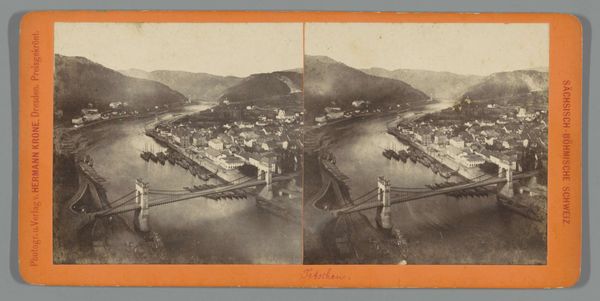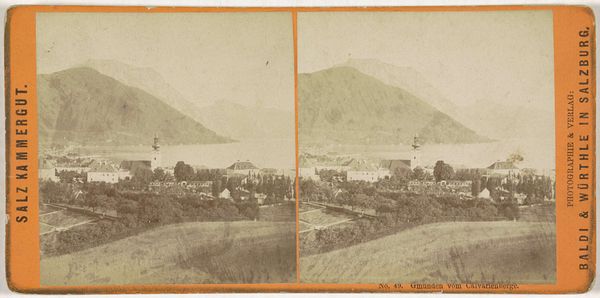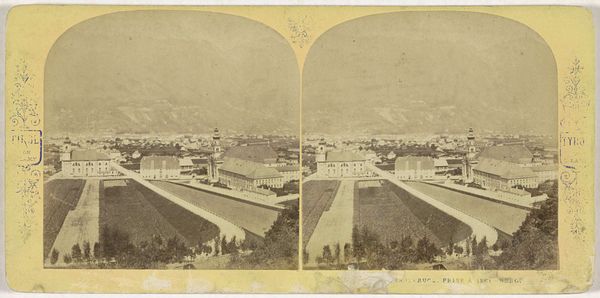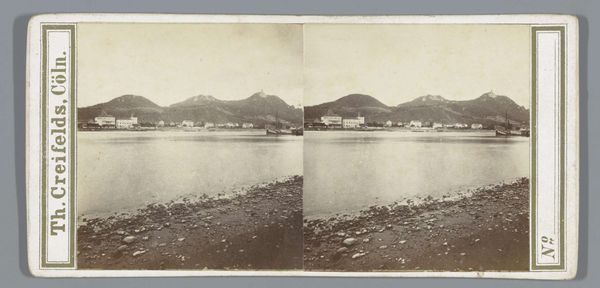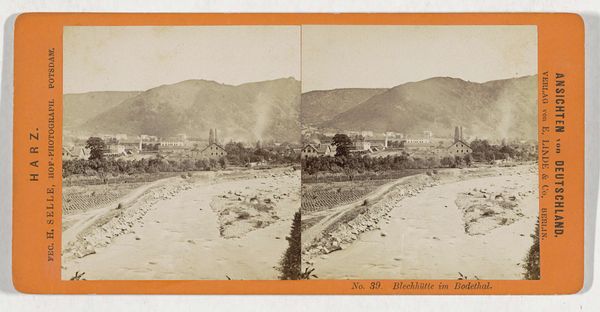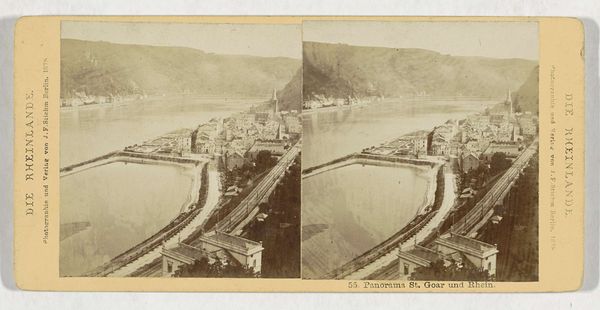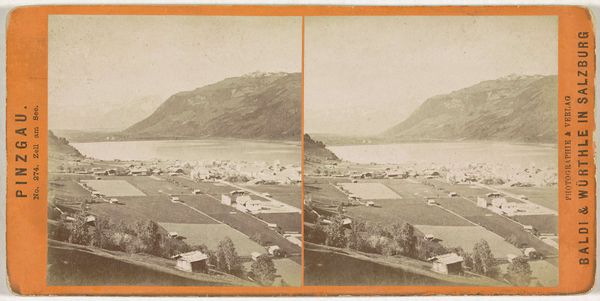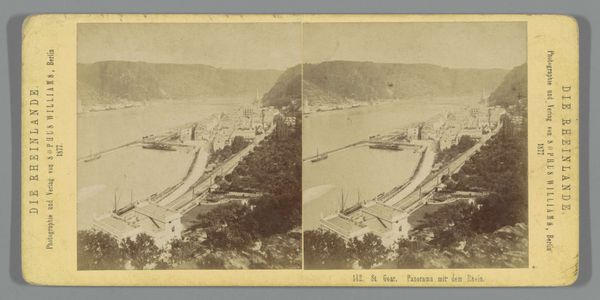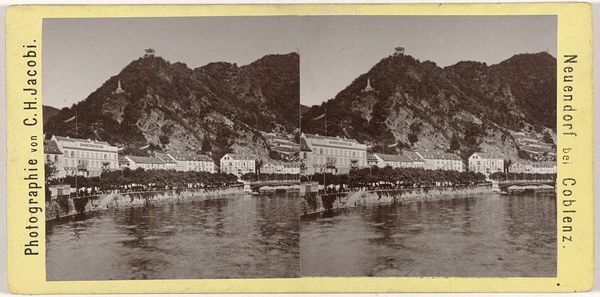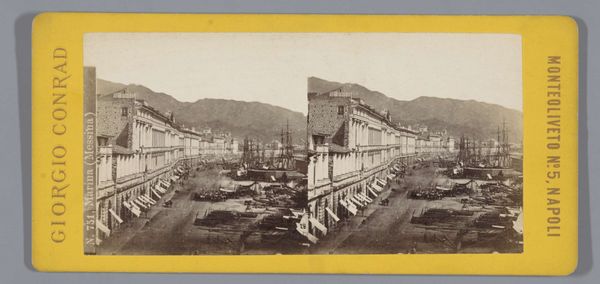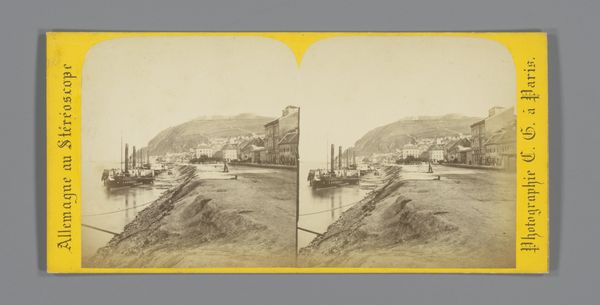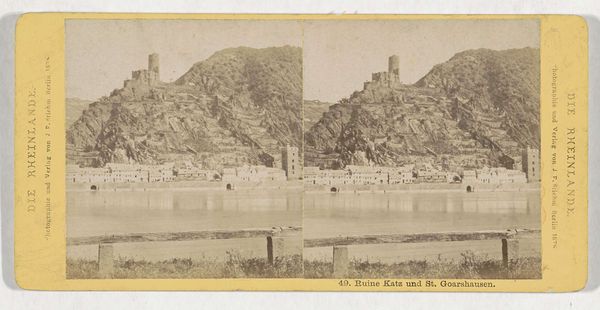
Gezicht op Kaub met kasteel Pfalzgrafenstein en de ruïne van kasteel Gutenfels 1878
0:00
0:00
photography, gelatin-silver-print
#
landscape
#
river
#
photography
#
coloured pencil
#
yellow element
#
gelatin-silver-print
#
watercolor
#
realism
Dimensions: height 85 mm, width 176 mm
Copyright: Rijks Museum: Open Domain
Curator: This stereoscopic gelatin silver print captures a vista of Kaub, featuring Pfalzgrafenstein Castle and the Gutenfels Castle ruins, dating back to 1878. Editor: The composition certainly projects a sombre atmosphere. The muted sepia tones contribute to this, almost giving it an antiquated feel, doesn’t it? Curator: Indeed. The monochromatic palette emphasizes the structure of the architecture and topography. Note how the river dominates the lower third, establishing a strong horizontal axis against the vertical thrust of the castles. Editor: I wonder what socio-political contexts might illuminate its purpose. I imagine it might reflect a burgeoning interest in preserving architectural heritage. What stories do these landscapes and structures tell us? Curator: Beyond preservation, it’s crucial to analyze how these landmarks themselves operate within the photographic space. Observe how Stiehm utilizes light and shadow to articulate depth and form. There's a delicate interplay here; it feels almost painterly. Editor: Very true. During this period, photography offered new ways to popularize cultural landmarks like medieval castles. The medium made it possible to democratize art to the masses and participate in shaping narratives around nationhood and local pride. It became entwined with tourist culture, did it not? Curator: Precisely! But considering Stiehm's approach, do you observe how the composition transforms the very landscape? It's no longer just a mere recording. Editor: Ah, yes. These "realist" landscape pictures can indeed create idealised visions of places. It makes one think about the politics of what gets depicted. Thanks for shedding light on that. Curator: My pleasure. Considering these combined viewpoints, it’s like our perspective mirrors the technological transition it represents: the evolving dynamics of capturing and shaping reality. Editor: A fascinating exploration, revealing not just what's in the frame, but what surrounds it and how it resonates.
Comments
No comments
Be the first to comment and join the conversation on the ultimate creative platform.

